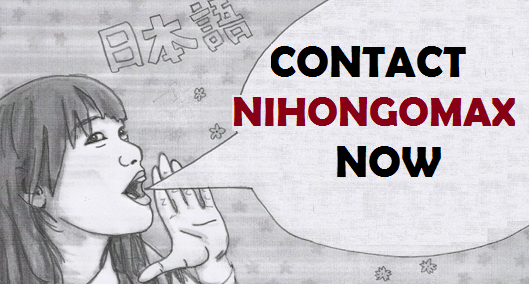


In today's digital era, the Japanese language is also evolving and changing as it adapts to the demands of social media, texting, and online communication. From the concise yet expressive nature of emojis to the integration of various useful English loanwords, the digital age has profoundly influenced how Japanese is used, perceived, and transmitted. In this article we will attempt to understand the dynamic relationship between Japanese language and digital communication, exploring its impact, challenges, and emerging trends.

Social media platforms like Twitter (now known as ‘X’), Instagram, and LINE have become integral to communication in Japan and beyond. These platforms provide a medium for users to share their thoughts, opinions, and experiences in real-time, fostering a culture of immediacy and brevity. With their character limits and real-time interactions, these platforms encourage linguistic innovation and creativity. On Twitter, for instance, users employ a blend of Japanese and English, to convey thoughts. Additionally, hashtags and trending topics serve as linguistic markers, propelling words and phrases into mainstream discourse at an unprecedented pace. This dynamic environment encourages users to experiment with language, contributing to the evolution of Japanese in the digital age.

Emojis, or "絵文字" (emoji) in Japanese, have revolutionized digital communication by providing a visual language of emotion. These small pictograms transcend linguistic barriers to convey emotions, nuances, and cultural references. From the iconic "🍣" representing sushi to the adorable "🐱" denoting cats, emojis enrich digital communication in ways words alone cannot. The introduction of emoji keyboards and customization options empowers users to personalize their messages, integrating emojis into their content and messages. Moreover, emojis serve as a universal language, facilitating cross-cultural communication and understanding in the digital sphere. Their widespread adoption reflects the increasingly visual nature of online communication and underscores the importance of non-verbal cues in conveying meaning.

The proliferation of mobile technology has transformed texting culture in Japan, shaping the way individuals communicate daily. From the early days of keitai (mobile phones) to today's smartphones, texting has evolved alongside technological advancements. Abbreviations, slang, and emoticons are commonplace in text messages, reflecting the informality and intimacy of digital communication. Messaging apps like LINE offer unique features such as stickers and stamps, adding a playful dimension to conversations and strengthening social bonds among users. Furthermore, the asynchronous nature of texting allows for more thoughtful and considered communication, fostering deeper connections in an increasingly fast-paced digital world.
English loanwords, or "外来語" (gairaigo), have permeated Japanese vocabulary, particularly in the digital sphere. As Japan embraces its role as a global player in technology and innovation, English loanwords have become ubiquitous in digital communication. From tech terminology like "インターネット" (internet) to everyday phrases like "チェックイン" (check-in), these loanwords reflect the globalized nature of digital communication. While some purists express reservations about their usage, others view it as a natural evolution driven by cultural exchange and technological innovation. The seamless integration of English loanwords underscores Japan's position as a leading player in the global digital landscape and highlights the fluidity and adaptability of the Japanese language.
Despite the benefits of digital communication, challenges persist, especially concerning language preservation and cultural identity. The rapid pace of technological change may erode traditional linguistic norms and practices, leading to concerns about language homogenization and loss of diversity. Additionally, the rise of machine translation and artificial intelligence raises questions about the role of human language in digital communication, emphasizing the need for ongoing dialogue and reflection. As Japan navigates the digital age, it must strike a balance between embracing technological advancements and preserving its linguistic and cultural heritage.
Looking ahead, the evolution of Japanese language in the digital age is poised to continue, driven by emerging technologies and changing communication patterns. Virtual reality, augmented reality, and voice recognition will usher in new modes of interaction and expression, shaping the linguistic landscape in unforeseen ways. Moreover, the globalization of digital platforms will foster greater cross-cultural exchange, leading to the emergence of hybrid linguistic forms and new opportunities for creativity and collaboration. As Japan embraces these changes, it must remain vigilant in preserving its linguistic identity while embracing the opportunities for innovation and collaboration offered by the digital age.
Amidst the rapid evolution of digital communication, efforts to preserve traditional linguistic and cultural identities are essential. Organizations and institutions in Japan are actively engaged in promoting language education and literacy, ensuring that future generations appreciate the richness and complexity of the Japanese language. Furthermore, initiatives to document and archive linguistic heritage play a crucial role in maintaining cultural diversity and fostering a sense of identity in an increasingly interconnected world. By celebrating its linguistic heritage and embracing the opportunities of the digital age, Japan can navigate the complexities of the modern world while preserving its unique cultural identity.
In conclusion, the Japanese language undergoes a profound transformation in the digital age, shaped by the dynamic interplay of technology, culture, and human ingenuity. From social media to texting and beyond, digital communication platforms redefine how Japanese is used, perceived, and transmitted. Embracing this evolution while safeguarding linguistic heritage and cultural identity is essential for navigating the complexities of the digital landscape. As we embark on this journey, let us celebrate the resilience and richness of the Japanese language, ensuring its vitality and relevance in the ever-changing digital landscape.
Start your Japanese language journey with Nihongomax . We provide best Japanese learning coaching in Delhi, both offline and online courses are available. Learn at affordable charges, at your own pace and comfort.
From N5(beginner) to N1(Advanced), we have curated high quality material and audio lessons to provide best Japanese language training for students. You can try out your first two classes of any level for free, and kick start your Japanese language learning journey today.
Also, check out our YouTube channel Nihogomax for more fun and interesting content.